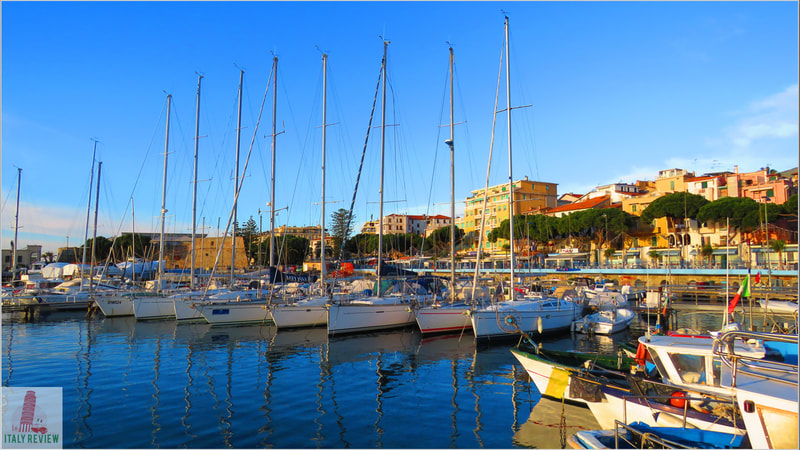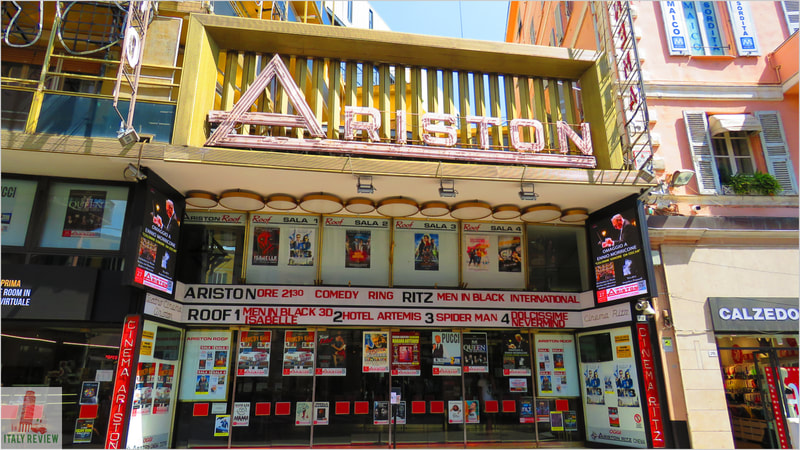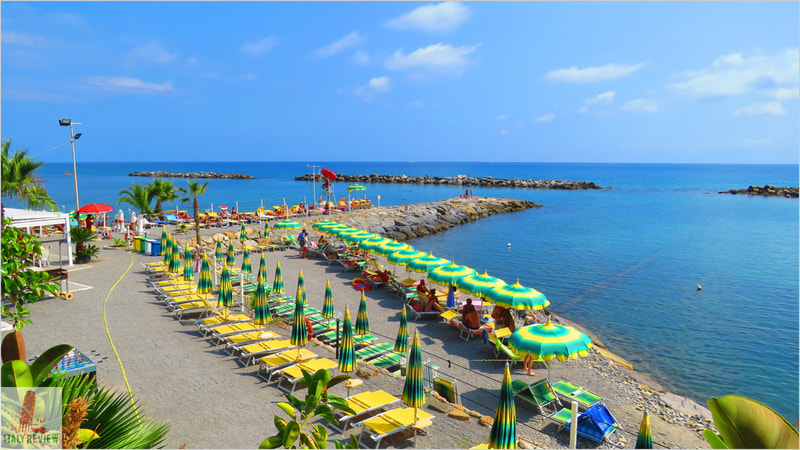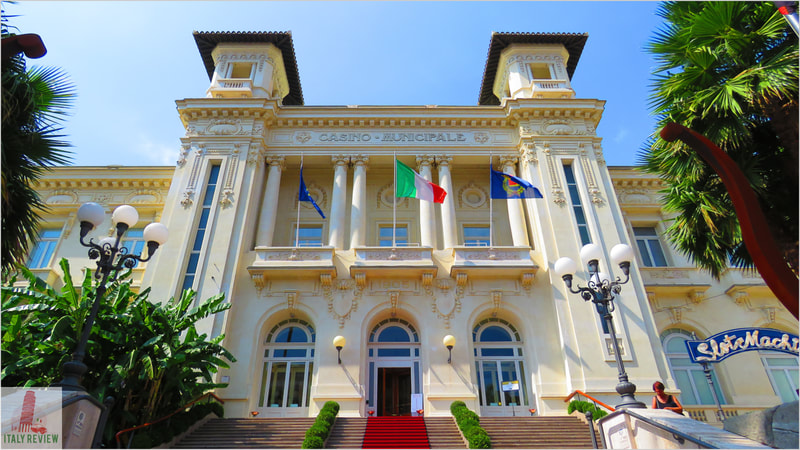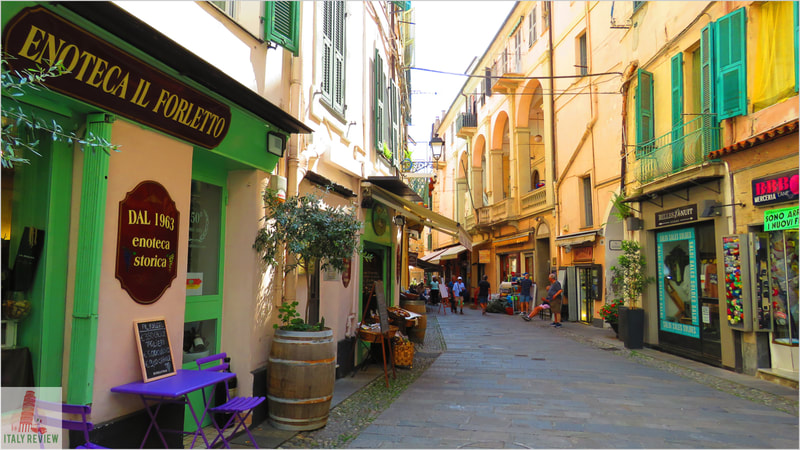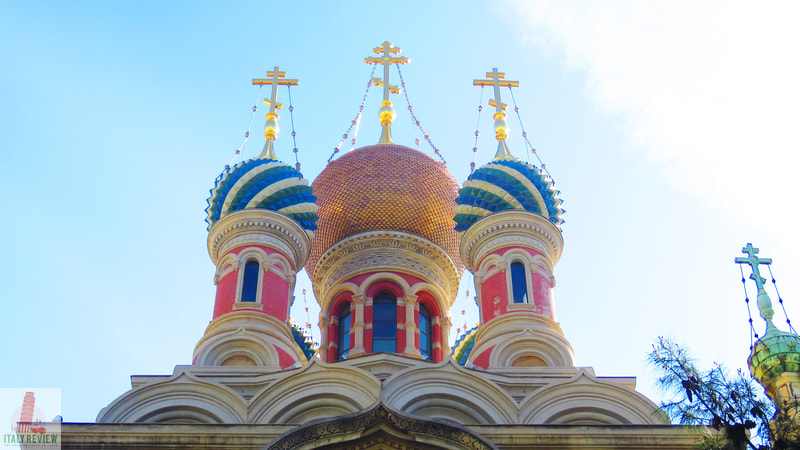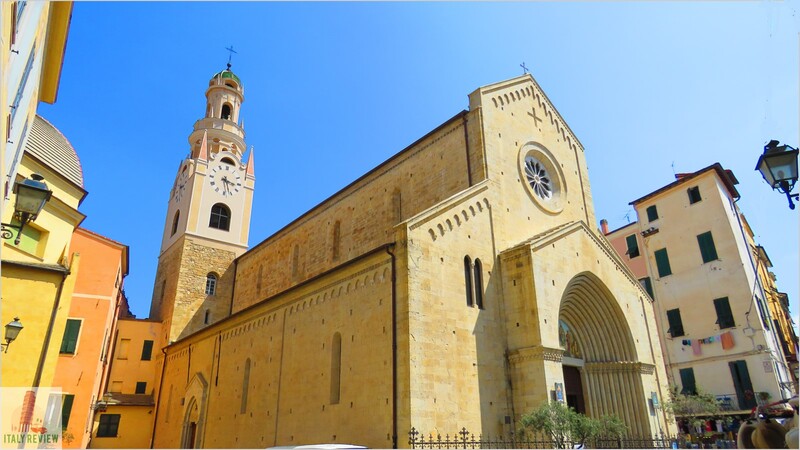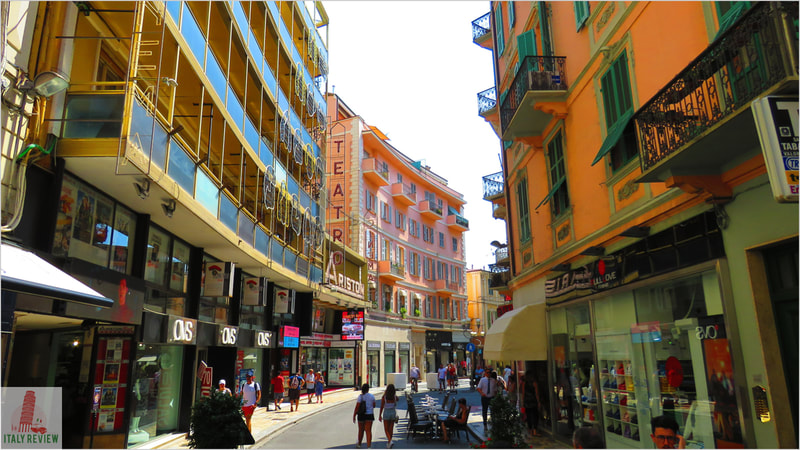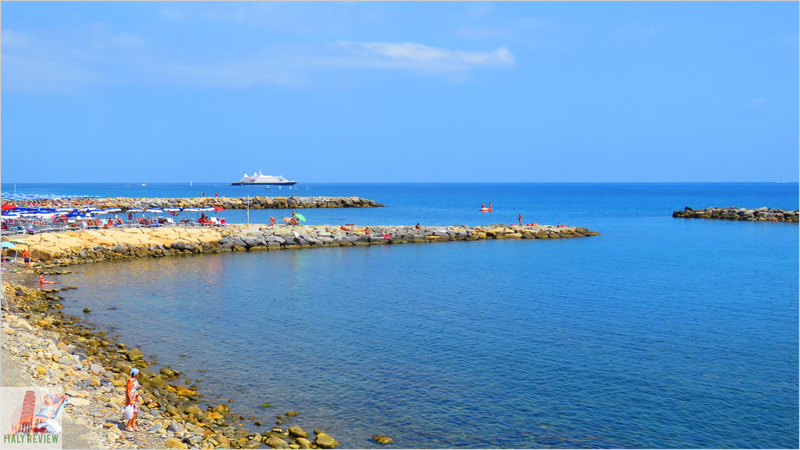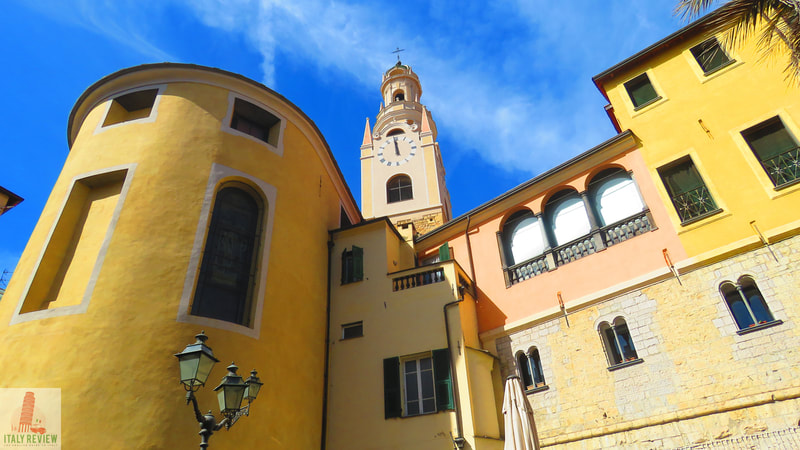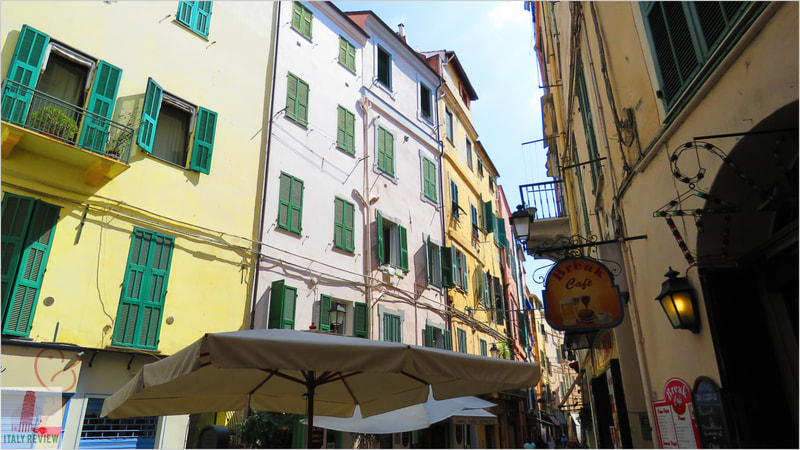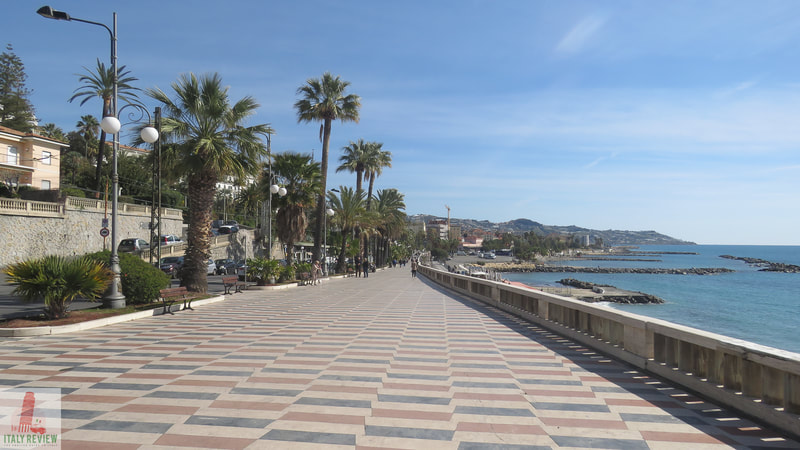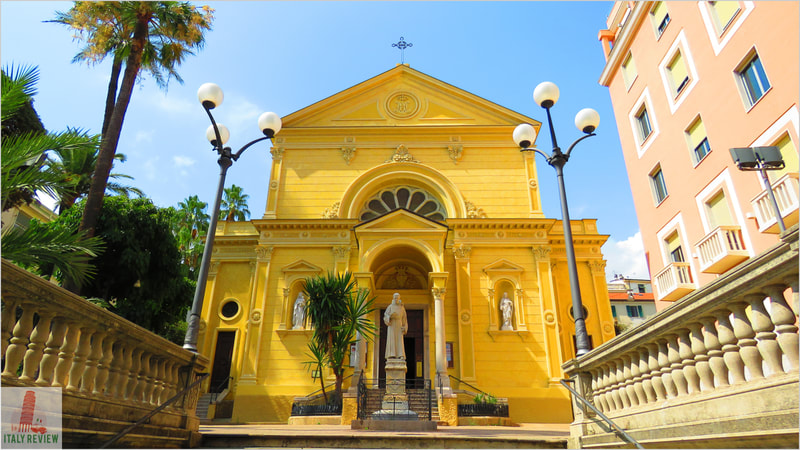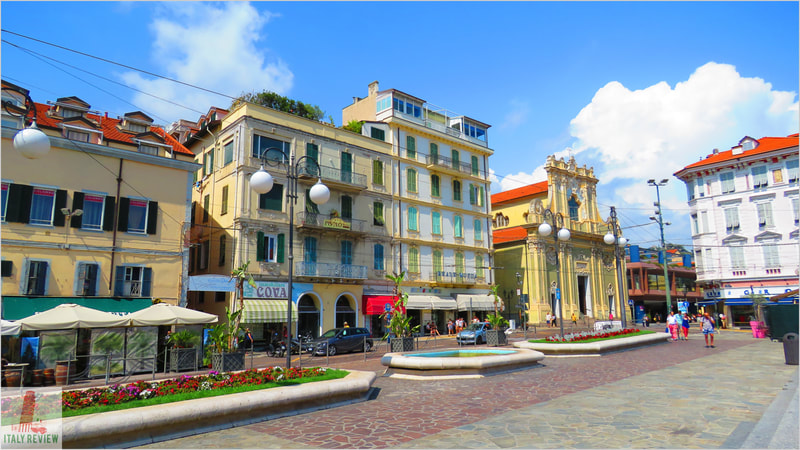Sanremo
|
By Dion Protani
|
Latest update: 30 December 2023
|
|
Situated 147 kilometres south west of Genoa, the city of Sanremo is the prime seaside resort along the Riviera di Ponente.
Every Italian will tell you this is the home of the annual Festival di Sanremo, a hugely popular nationwide TV event where a mixture of new and established musical acts compete for stardom. The event takes place every year spring at the iconic Ariston Theatre. Even more iconic than the Ariston Theatre is Sanremo's most famous building: the Casino. |
Related links
Sanremo: the Art Nouveau City of Flowers on the Italian Riviera
Built in 1904, the beautiful Art Nouveau building is free to enter for all visitors with attractions including exhibitions and other events. Its biggest attraction however is of course its gaming tables for which you're expected to dress accordingly (somewhere between James Bond and smart casual).
The Casino is situated on Corso Imperatrice which was named after Maria Alexandrovna, a frequent visitor to Sanremo and wife of Czar Alexander at a time when the Russian aristocracy (along with the English), frequented the city in great numbers.
Another nod to the Russian presence in Sanremo is just a short walk from the Casino; the Russian Orthodox Church with its onion-shaped domes nestled among some of Sanremo's fin de siècle hotels. The period from the 1880's to the turn of the century saw Sanremo's heyday and it is from this era that most of its best buildings belong.
The Casino is situated on Corso Imperatrice which was named after Maria Alexandrovna, a frequent visitor to Sanremo and wife of Czar Alexander at a time when the Russian aristocracy (along with the English), frequented the city in great numbers.
Another nod to the Russian presence in Sanremo is just a short walk from the Casino; the Russian Orthodox Church with its onion-shaped domes nestled among some of Sanremo's fin de siècle hotels. The period from the 1880's to the turn of the century saw Sanremo's heyday and it is from this era that most of its best buildings belong.
Sightseeing Sanremo
Take a stroll east from the Casino on Corso Imperatrice and you eventually reach the city's thriving shopping hub on Corso Matteotti. It is within this part of town that you'll find the Ariston Theatre and the Palazzo Borea d'Olmo just a few doors down. The impressive 15th century Palazzo houses the Museo Civico with its variety of exhibits including archaeological artefacts and frescoes adorning the walls.
Corso Matteotti with its huge array of shops is one of three main areas that make up Sanremo. A second area of importance is La Pigna (The Pine Cone), a labyrinthine nest of medieval streets where you'll find a mixture of houses, places to shop and places to eat. La Pigna is situated north east of Piazza Eroi Sanremesi and if you're feeling energetic you can climb all the way up to the beautiful Santuario della Madonna della Costa. The effort is rewarded not only by visiting the Sanctuary but also by a stop along the way at Piazza Castello from where you get a bird's eye view down on to the city.
Corso Matteotti with its huge array of shops is one of three main areas that make up Sanremo. A second area of importance is La Pigna (The Pine Cone), a labyrinthine nest of medieval streets where you'll find a mixture of houses, places to shop and places to eat. La Pigna is situated north east of Piazza Eroi Sanremesi and if you're feeling energetic you can climb all the way up to the beautiful Santuario della Madonna della Costa. The effort is rewarded not only by visiting the Sanctuary but also by a stop along the way at Piazza Castello from where you get a bird's eye view down on to the city.
Exploring beyond the city centre
Once you've made your way down from La Pigna or the Sanctuary, you can visit the city's 12th century Cattedrale di San Siro, before continuing down to the city's third main area of interest: the seafront. Two palm tree-lined promenades, Lungomare Vittorio Emanuele II and Lungomare Italo Calvino are flanked by a series of beaches on one side and an impressive collection of Liberty-style residences on the land side. The promenades eventually lead to the city's main harbour called Porto Vecchio which is populated by luxury yachts whose denizens frequent the port's bars and restaurants.
To the north east of the port there are a series of grand palazzi and among them Villa Ormond with its beautiful garden a must for any visit to the city. Just a short distance from Giardini Ormond another grand residence, Villa Nobel, pays homage to one of Sanremo's most famous residents: Alfred Nobel, who eventually died here in 1896.
To the north east of the port there are a series of grand palazzi and among them Villa Ormond with its beautiful garden a must for any visit to the city. Just a short distance from Giardini Ormond another grand residence, Villa Nobel, pays homage to one of Sanremo's most famous residents: Alfred Nobel, who eventually died here in 1896.
The City of Flowers
Sanremo is to many people the "City of Flowers"; this is due to its beautiful summer blooms that brighten up the streets but also in recognition of its importance to the flower industry. Just to the east of Sanremo lies the Mercato dei Fiori, the flower market, from which a huge number of flowers are distributed every year.
Not content with flowers, music festivals or a casino, Sanremo is also the scene of the Milan - San Remo Classic; a cycling race which has taken place once a year since 1907 and represents the longest single-day race in the world at a distance of 298 kilometres. A further nod to the cycling world is present in the city's Pista Ciclabile - a 25 kilometre long cycling track that stretches from the town of Ospedaletti, west of Sanremo, to San Lorenzo al Mare, west of the city.
Not content with flowers, music festivals or a casino, Sanremo is also the scene of the Milan - San Remo Classic; a cycling race which has taken place once a year since 1907 and represents the longest single-day race in the world at a distance of 298 kilometres. A further nod to the cycling world is present in the city's Pista Ciclabile - a 25 kilometre long cycling track that stretches from the town of Ospedaletti, west of Sanremo, to San Lorenzo al Mare, west of the city.
Sanremo bullet-points
Nestled along the Ligurian coast, Sanremo is a captivating town that combines Riviera elegance with Mediterranean charm. Known for its mild climate, stunning coastline, and historic significance, Sanremo has earned its reputation as a premier destination on the Italian Riviera.
History
Tourist Information
Travel Information
History
- Ancient Origins: Sanremo's history dates back to Roman times, when it was known as "Matutia." Its strategic location made it a hub for trade and maritime activities.
- Aristocratic Retreat: In the 19th century, Sanremo became a favored winter retreat for European aristocracy, drawn by its pleasant climate and natural beauty.
- Cultural Significance: Sanremo is renowned for the annual Sanremo Music Festival, one of Italy's most prestigious music events, which has shaped the country's music landscape.
Tourist Information
- Passeggiata Imperatrice: Stroll along the "Empress Promenade," a charming coastal walk named after Empress Maria Alexandrovna of Russia, which offers breathtaking sea views.
- Casino di Sanremo: Explore the historic Casino di Sanremo, an architectural marvel that has been a center of entertainment and glamour since the early 20th century.
- La Pigna: Wander through the medieval quarter of La Pigna, with its labyrinthine alleys, colorful houses, and quaint shops.
- Russian Orthodox Church: Admire the Russian Orthodox Church, a unique architectural gem gifted by the Russian Imperial Family to Sanremo.
- Flower Market: Experience the vibrant atmosphere of the city's flower market, a testament to Sanremo's "City of Flowers" nickname.
Travel Information
- Access: Sanremo is well-connected by train, with the Sanremo railway station offering links to major cities along the coast.
- Air Travel: The closest international airport is Nice Côte d'Azur Airport in France, approximately 55 kilometers away, serving as an option for air travelers.
- Roadways: Sanremo is accessible by car through the A10 highway, making it convenient for those traveling by road.
- Local Transport: Buses and taxis provide easy transportation within the town and for exploring neighboring areas.
- Climate Consideration: Sanremo's mild climate allows for year-round visits, though summer and spring are particularly popular.
Comune di Sanremo
|
Province: Imperia
Region: Liguria Population: 52,918 (source: ISTAT 1 January 2023) Size: 55 km² Highlights: Casino, Ariston Theatre, Sanremo Cathedral, marina Water quality: Blue Flag Beach 2021 - 2022 Close by: Hanbury Botanical Gardens, Apricale, Imperia Recommended accommodation: Royal Hotel Sanremo |

